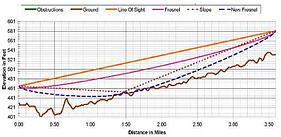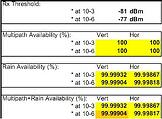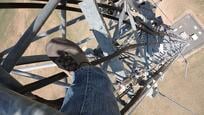Question 2: Is it reliable?
Yes! Provided it is designed / engineered correctly, you use the right equipment & frequencies, and it is installed properly.
As with the prior blog on this series "Does weather effect wireless? The 5 Misconceptions - Part 1", I stressed the importance of properly designing and installing the right outdoor wireless bridge equipment. This will be a common theme throughout the series. Outdoor wireless backhaul is different than indoor 802.11 a/b/g/n Wi-Fi that many are accustomed too. Indoor wireless devices take advantage of multipath and are very forgiving due to its short range, high power transmission using typically omnidirectional antennas.
Outdoor wireless, especially when dealing with point to point wireless or point to multipoint wireless networks, relies on having a concentrated directional signal in order to create the best possible signal and interference negation. This means a specific antenna communicates (sends and receives) with another specified antenna(s).
From "Part 1:" All wireless signals that travel from one antenna system to another experiences some form of "Path Loss". Properly designed systems use the correct antennas, frequencies, and transmit power ("Tx") to overcome the Path Loss to get the desired Receive Signal Level ("RSL" measured in dBm). Radios are designed to operate with a certain level of "Fade Margin" that allows the system to operate at a predictable reliability (for most systems 20 to 25dB of Fade Margin is recommended). This means if a system has an RSL of -50dBm and it has a receiver threshold of -72dBm, you'll have 22dB of Fade Margin or the amount of dB signal strength a system can lose before you will experience errors (referred to as BER - Bite Error Ratio) or loss of connectivity.


Factors that can effect a RSL to fade can be either natural (e.g trees, heavy rain, or wind moving the antenna) or man made (e.g. building built in the path) causing the signal to be partially or fully blocked. Other environmental factors can be interference (an undesired signal in the same frequency from another system) or multipathing caused be reflection off a physical surface, either in the near field or along the path.
Knowing the radio system's designed threshold one can perform path calculations, combining path loss, predictive modeling (terrain and weather models), system components (antenna and radio gain), etc. Software tools are available to perform the path calculations like: Path Loss or MicroPath.
With path calculations we can determine the predictable reliability of most wireless backhaul systems. Important to note you get what you pay for. There are both good and bad manufactured outdoor wireless bridge equipment. A properly designed system can achieve 99.999% reliability (<5min of predictable outage a year). This is typically better than any leased Telco circuit's SLA.
It all comes down to proper planning (design / engineering), proper outdoor wireless backhaul equipment, frequency choice, and proper installation. Note: Installation should be done by a licensed professional that understands the key elements of proper wireless installation. Trust me. After years of troubleshooting systems that were installed by other so called professionals, I have seen about 80% of system issues being due to improper wireless installation. So please do your homework on the vendor you use and get reference by both other clients and the outdoor wireless bridge manufacture.





